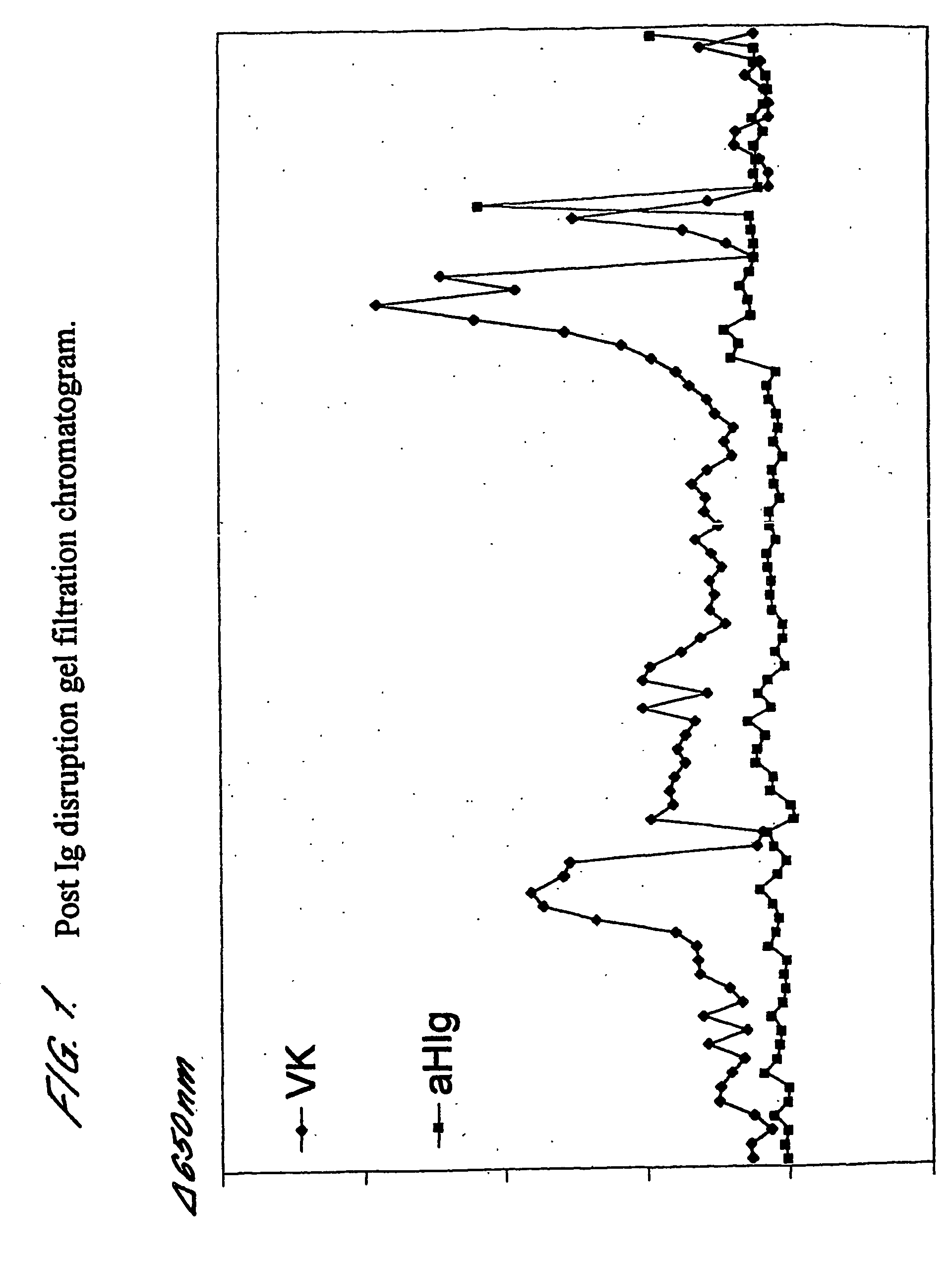Tumour marker proteins and uses thereof
a technology of tumor markers and proteins, applied in the field of tumor markers, can solve the problems of inability to recombinantly expressed proteins, time-consuming to purify sufficient quantities of proteins, and limited use of markers
- Summary
- Abstract
- Description
- Claims
- Application Information
AI Technical Summary
Benefits of technology
Problems solved by technology
Method used
Image
Examples
example 1
General Protocol for Purification of MUC1 Antigen
[0092] Monoclonal anti-MUC1 antibody B55 (also known as NCRC 11, Xoma Corporation) is conjugated to CNBr-sepharose beads. Other anti-MUC1 monoclonal antibodies may be substituted for B55.
[0093] Tumour-induced body fluids (e.g. pleural effusion, ascites, seroma or wound drainage fluid) are diluted 1 / 10 with phosphate buffered saline (PBS) and filtered to 0.45 μm.
[0094] Diluted body fluids are incubated with the anti-MUC1 sepharose beads (25 ml diluted fluid to 1 ml packed volume of beads) overnight at 4° C. with rolling (“batch” method) or re-circulated overnight through a packed column containing anti-MUC1 sepharose beads (“column” method).
“Batch” Method:
[0095] Beads are packed by centrifugation and the supernatant removed;
[0096] Beads re-suspended in 5-10 ml PBS and rolled for 10 mins then packed by centrifugation and the supernatant removed; repeat 5 times (or until A280 nm˜0)
[0097] Beads re-suspended in 5 ml 100 mM DEA pH 11...
example 2a
General Protocol for Purification of MUC16 Antigen (Previously Known as CA125)
[0109] One volume (e.g. 50 ml) of saturated ammonium sulphate was added to one volume (e.g. 50 ml) of tumour-induced body fluid (e.g. pleural effusion, ascites, seroma or wound drainage fluid) and incubated overnight at 4° C.
[0110] The resultant precipitate is collected by centrifugation (3500 rpm for 30 min in a standard benchtop centrifuge) and resuspended in ½ volume PBS.
[0111] This resuspension is subjected to gel filtration chromatography through an S300 column (2.5×100 cm) using PBS as the eluting buffer.
[0112] Fractions (5 or 10 ml) are collected and assayed by ELISA for MUC16, using for instance anti-CA125 from ICN or the anti-MUC16 antibody VK8 (Memorial Sloane Kettering, New York), prior to pooling MUC16 positive fractions and storage at −20° C.
[0113] In order to remove contaminating immunoglobulins, MUC16 pools are incubated with NaSCN (to 1.5M) for 10 mins, DTT (to 50 mM) for 30 mins, then...
example 2b
Post Ig Disruption Gel Filtration Chromatography
[0116] For a sample prepared in the manner described above, fractions from a post-Ig disruption gel filtration were assayed for MUC16 using anti-MUC16 antibody VK8 and for human Ig using an anti-human Ig. The results are shown in FIG. 1. As is clearly demonstrated, two substantially immunoglobulin free MUC16 peaks are eluted.
PUM
| Property | Measurement | Unit |
|---|---|---|
| Strength | aaaaa | aaaaa |
| Therapeutic | aaaaa | aaaaa |
| Reactivity | aaaaa | aaaaa |
Abstract
Description
Claims
Application Information
 Login to View More
Login to View More - R&D
- Intellectual Property
- Life Sciences
- Materials
- Tech Scout
- Unparalleled Data Quality
- Higher Quality Content
- 60% Fewer Hallucinations
Browse by: Latest US Patents, China's latest patents, Technical Efficacy Thesaurus, Application Domain, Technology Topic, Popular Technical Reports.
© 2025 PatSnap. All rights reserved.Legal|Privacy policy|Modern Slavery Act Transparency Statement|Sitemap|About US| Contact US: help@patsnap.com



